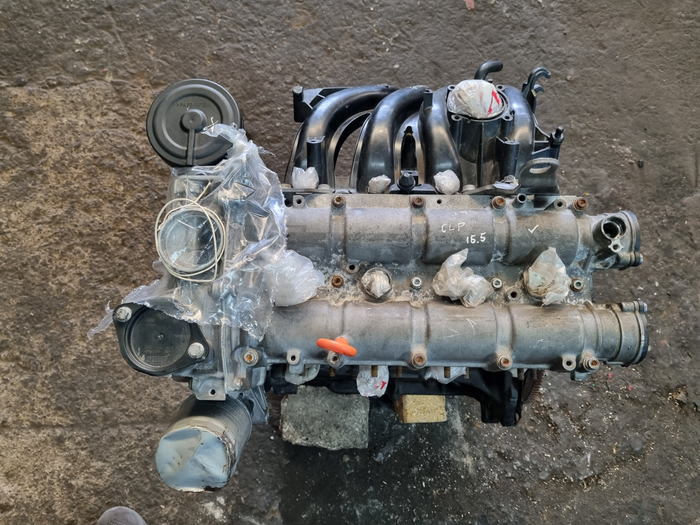Prolong the lifespan of your clp engine with regular care.
Prolong the lifespan of your clp engine with regular care.
Blog Article
Just How a Clp Engine Can Boost Efficiency in Different Industries
The development of CLP engines marks a significant change in functional effectiveness across numerous markets, driven by their ability to optimize fuel usage and decrease downtime. Industries such as manufacturing and logistics stand to get considerably from their robust design and consistent power result, which assure to enhance procedures and boost efficiency. As companies significantly prioritize sustainability along with effectiveness, the duty of CLP engines ends up being even more vital. What stays to be seen is just how these improvements will form the future landscape of commercial operations and their influence on broader economic patterns (clp engine).
Summary of CLP Engines
CLP engines, or Continual Fluid Propellant engines, stand for a considerable advancement in propulsion modern technology, specifically for space applications. These engines make use of a continuous feed system that permits for the sustained expulsion of propellant, bring about enhanced efficiency and performance compared to conventional strong or hybrid propulsion systems. By keeping a consistent flow of fluid propellant, CLP engines can attain extra specific thrust control, which is important for maneuvering spacecraft in different mission situations.
The design of CLP engines incorporates innovative products and ingenious gas monitoring systems. clp engine. This causes reduced weight and raised integrity, essential factors for long-duration space goals. The continual operation lessens the danger of burning instability, a common challenge in standard rocket engines.

Advantages in Production
The production of Continual Fluid Propellant (CLP) engines offers a number of notable advantages that enhance both performance and cost-effectiveness. Among the main advantages is the structured production procedure, which minimizes the complexity related to traditional propulsion systems. By utilizing liquid propellant, producers can attain higher precision in engine efficiency, resulting in maximized power outcome and minimized waste.
In addition, CLP engines facilitate a greater level of modularity, permitting easier integration right into various production lines. This adaptability can dramatically lower lead times and boost total functional adaptability. The usage of CLP modern technology additionally tends to decrease the need for comprehensive upkeep as a result of fewer relocating parts, which converts into reduced downtime and operational expenses.

Applications in Logistics
Leveraging Continual Liquid Propellant (CLP) engines in logistics provides significant benefits in functional effectiveness and dependability. These engines give a robust option for numerous transportation needs, allowing the smooth motion of items throughout vast ranges. The inherent design of CLP engines permits constant power output, which equates into smoother and a lot more predictable transport routines.
Among the crucial applications of CLP engines in logistics is in heavy-duty see post products transportation, where they can drive both ground and airborne cars. Their capacity to keep high performance under differing tons conditions guarantees that delivery timelines are satisfied, therefore improving customer complete satisfaction. Furthermore, CLP engines can be integrated right into automated logistics systems, helping with real-time tracking and maximizing route planning.
Moreover, the sturdiness of CLP engines decreases maintenance downtime, permitting logistics firms to maximize their operational capacities. This is particularly useful in warehousing operations, where performance in handling and transporting goods is essential. As logistics remains to advance, the integration of CLP engines represents a forward-thinking method read review that not only improves efficiency however likewise sustains the industry's growing needs for reliability and rate.
Influence On Energy Effectiveness
Exactly How do Continuous Liquid Propellant (CLP) engines boost power efficiency in transport? CLP engines utilize a constant flow of liquid gas, enhancing burning processes and keeping a steady drive output. This design lessens energy losses connected with typical burning engines, where gas distribution can differ and result in inadequacies.
The continual procedure of CLP engines permits for a much more efficient thermal cycle, causing greater specific impulse compared to conventional engines. clp engine. This equates to reduced gas usage for the exact same quantity of work done, considerably reducing functional prices across different transport fields, consisting of aviation and maritime industries
Additionally, the capacity of CLP engines to maintain ideal efficiency under varying load problems minimizes the requirement for constant velocity and slowdown, additionally boosting gas performance. Enhanced power performance not just adds to cost savings however also leads to reduce greenhouse gas exhausts, aligning with international sustainability goals.
Future Trends and Innovations
Emerging advancements in Continual Fluid Propellant (CLP) engine More about the author innovation guarantee to revolutionize the landscape of transportation effectiveness and sustainability. As markets pivot towards greener options, CLP engines stand at the center, incorporating ingenious materials and layout approaches that improve efficiency while lessening ecological impact.
Among the most promising fads is the fostering of hybrid systems that incorporate CLP engines with renewable energy resources. This harmony can maximize fuel consumption and decrease emissions, straightening with global sustainability goals. Innovations in computational fluid dynamics (CFD) are promoting the layout of more aerodynamically reliable engines, leading to lowered drag and improved fuel performance.
Furthermore, the advancement of wise surveillance systems is established to improve functional effectiveness. These systems take advantage of data analytics and IoT technology to maximize engine performance in real-time, making certain that the engines operate within their most efficient specifications.
As research study proceeds to explore alternative propellant solutions-- such as biofuels and artificial fuels-- the future of CLP engines looks appealing. By utilizing these advancements, sectors can not only boost their efficiency but additionally contribute substantially to a cleaner, more sustainable future in transportation.
Verdict
In verdict, CLP engines represent a significant innovation in effectiveness throughout several markets. The combination of sophisticated materials and less relocating components reduces upkeep needs, while placement with sustainability objectives placements CLP engines as a pivotal technology for the future.
Report this page